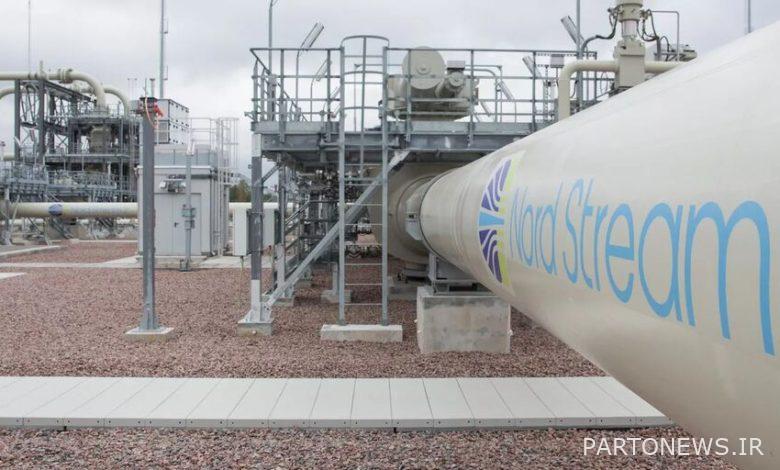Ukraine’s attempt to exploit huge underground gas reserves

According to IRNA from the Telegraph website; The large state-owned oil and gas company of Ukraine “Neft and Gaz”, which has identified large gas reserves awaiting exploitation, including the Dnipro-Donets field, which is in the second place in Europe, is ready to supply them to international companies, and so far has been working with American companies. He has negotiated about this.
The move to make these reserves available to energy companies could help Europe find new sources of gas following the end of the war in Ukraine and move away from importing more expensive liquefied natural gas (LNG).
Myron Vasylik, the advisor to the CEO of the Ukrainian Oil and Gas Company, estimated that there are up to 40 billion cubic meters of gas in the country’s underground reservoirs, although it will not be possible to exploit them until the second half of the current decade.
Following Russia’s attack on Ukraine nearly eight months ago, Europe is looking for alternative sources of energy instead of importing from Russia.
The major part of Ukraine’s gas production and reserves is located in the east of the Dnipro River, which passes through the middle of this Eastern European country.
The amount of Russian gas supply to Europe before the start of the war and the interruption of its flow on the eve of winter in this region supplied nearly 40% of Europe’s gas. Despite the decrease in the price of gas in the past weeks following the filling of the storage levels of European countries, there are concerns about the lack of energy in this continent.
According to IRNA’s Saturday report from Fortune website; Although Europe is now in the middle of a severe energy crisis, this is only the beginning of a path that will not only not end next year, but may become much more intense.
After nearly eight months have passed since the start of Russia’s attack on Ukraine, Europe’s move away from importing energy from Russia has not been easy and at least in the short term it has caused an increasing energy crisis in this continent, including the unprecedented price of natural gas and the tripling of the electricity bill. It has been in some places.
The value of Europe’s energy imports from Russia last year (2021) was equal to 99 billion euros ($117 billion), of which nearly 40% of this amount was for natural gas consumption and 30% for crude oil of this continent.
In a successful effort, European governments have been able to complete the capacity of underground natural gas reserves to face the colder months of the upcoming winter, when energy demand will be at the highest level during that period. Germany announced that it was able to fill 95% of its gas storage capacity 2 weeks ahead of schedule, and now nearly 92% of the gas storage capacity in the European Union is filled, which is much ahead of the previous plan to complete 80% capacity. They have until November 1 (10 Aban).
While topping up storage resources may make it easier to get through this winter, they won’t last forever. According to experts, European gas storage resources are designed for only a few months, regardless of the cold or mild winter weather, and it seems that the European energy crisis in 2023-2024 due to the increasing limitation of Russian gas exports. The absence of any new natural gas projects until next year and competition from more Asian markets will be much more intense.
Since Russia’s invasion of Ukraine last February, the European Union has worked hard to reduce dependence on Russian energy sources, including a nationwide ban on most Russian imports from December. Until late August, Europe was receiving sufficient quantities of natural gas from Russia, mainly through the Nord Stream pipeline, which was mostly used to fill storage resources, until Russian energy companies cut off the flow of natural gas in response to Western sanctions. .
Any hope that the Nord Stream could resume before next winter was dashed when the pipeline was damaged at the end of September and hundreds of thousands of tons of methane gas leaked into the North Sea. Although natural gas did not flow in this pipeline when it was damaged, the repair operation has not started yet.
According to Tatiana Mitrova, a researcher at the Global Energy Policy Center affiliated with Columbia University; Although other pipelines between Russia and Europe are active so far, the Kremlin has recently warned of a similar fate to Nord Stream and their closure.
Some of these pipelines pass directly through Ukrainian territory, and the war may simply affect their capacity to transport gas to Europe.
Europe has several options to replenish its reserves before next winter if the flow of Russian gas is interrupted. The continent has turned to importing large volumes of liquefied natural gas (LNG), which is easier to transport than natural gas from the United States and the Middle East. Major producers, however, have made it clear that no new natural gas projects will start next year, meaning supply will remain tight.
In an effort to fill the capacity of its reservoirs, the continent benefits from a significant reduction in energy demand in Asian markets, especially China. Imports of China, the world’s largest LNG importer, in 2022, especially from the United States and Qatar, mainly due to economic stagnation, quarantines to prevent the covid-19 epidemic and a warmer winter than expected, have dropped by 14%. Is.
But the return of China’s natural gas consumption to its previous level depends on the improvement of the country’s economic conditions in the coming year and the possibility of a cold winter, which may increase the gas consumption of this East Asian country again.
The Paris-based International Energy Agency predicted in October that the supply of natural gas will remain limited in 2023 due to the decline in Russian exports and the lack of new projects in the world.

